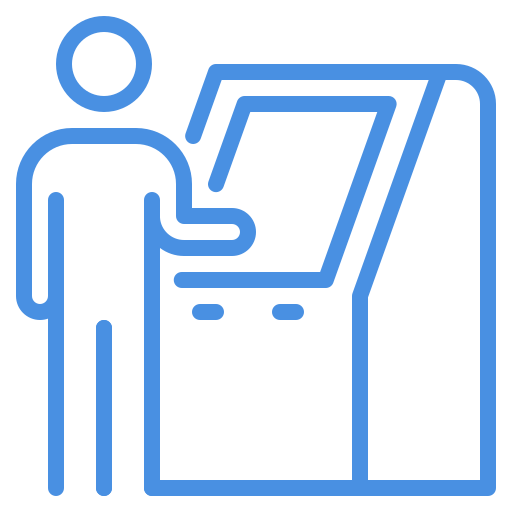Superbill: #1 Guide for Cash-Based Therapy Practices
A superbill is a crucial document for cash-based therapy practices, helping patients submit claims for reimbursement to their insurance providers. This comprehensive guide explains the key benefits of offering superbills, what essential information to include, and how to streamline the process using an EMR system like HelloNote. By creating accurate superbills, therapists can support their patients’ reimbursement efforts, reduce administrative burdens, and improve overall patient satisfaction. Learn how to make the most out of superbills in your therapy practice today!

If you own a therapy practice, especially a cash-based one, you’ll likely encounter a patient asking for a bill they can submit to their insurance for potential reimbursement. A simple invoice works if they’re just looking for a receipt, but for reimbursement, insurance companies typically require something more comprehensive: a superbill. I remember when I first started in a cash-based practice, it was easy to feel unprepared when a patient requested a document for reimbursement. But over time, I learned the ins and outs of superbills and found that having a template ready can be a lifesaver. Here’s what I’ve learned about superbills and why they’re valuable tools in a cash-based setting.
What Exactly is a Superbill?
In short, a superbill is a detailed document that includes everything an insurance company needs to determine if a patient’s health expenses are eligible for reimbursement. Think of it as a claim, only in this case, the patient submits it directly to their insurance rather than the clinic doing it on their behalf. This distinction is crucial for cash-based practices, as we often need to provide patients with this option while not directly handling the claims ourselves.
A superbill can make all the difference when it comes to patient satisfaction. Not only does it show we’re supporting their reimbursement efforts, but it also opens the door to a broader patient base—especially those with insurance coverage but who prefer the flexibility of cash-based services.
Why Offer Superbills? Key Benefits
Patients Feel Supported and More Likely to Continue Therapy.
From my experience, many patients appreciate knowing they might receive partial reimbursement for their therapy. When patients are confident they can recover some out-of-pocket costs, they tend to be more comfortable committing to their treatment plan.
Expands Client Base in Cash-Based Practices.
By providing superbills, you can attract insured patients who might otherwise hesitate to pay out-of-pocket. This has helped many therapists, myself included, expand their client base and retain patients who want quality care with a possibility of reimbursement.
Saves Time on Claims Processing.
Creating superbills means therapists like us spend less time on the nitty-gritty of insurance submissions, freeing us up to do what we love—caring for patients! Let the patient handle the insurance submission, while we focus on patient care.
Allows for Upfront Payment and Reduces Reimbursement Wait Times.
One of the great things about superbills is the option to request payment after each session. By giving patients the superbill, they’re in charge of their reimbursement process, avoiding the wait that’s common in traditional insurance billing.
What to Include in Creating a Superbill
Superbills are not your everyday invoice. They need to meet specific criteria to be valid for insurance purposes. Here’s what I make sure to include every time:
- Clinic Information: Your clinic’s name, address, and phone number should appear at the top.
- Tax ID Number (TIN): This is essential for identifying your clinic for tax and insurance purposes.
- Patient Information: Include the patient’s name, date of birth, phone number, and address.
- Diagnosis Codes (ICD-10): Every diagnosis must be coded with the correct ICD-10 classification.
- Detailed Service List (CPT Codes): List each service provided as separate line items, including costs, and if relevant, include any equipment purchased, like therabands or cold packs.
- Payment Details: Total amount charged, amount paid, and any remaining balance.
- Therapist Information: Include your name, credentials, license number, clinic address, and NPI number.
- Place-of-Service Code: This code indicates where the session took place, whether in-clinic, telehealth, etc.
- Signature and Date: Don’t forget to sign and date each superbill to validate it.
When I first started, I realized that missing even one of these elements could lead to a rejected reimbursement. Since then, I’ve created a template that I use for every superbill. If you’re using an EMR like HelloNote, it can generate superbills for you, saving you even more time and stress.
Patient’s Next Steps: Submitting the Superbill
Often, patients are unfamiliar with the process of submitting superbills, so I take a few moments to explain the next steps. After receiving the superbill, the patient needs to complete any additional forms required by their insurance, attach the superbill, and send it to their insurance provider. Each insurer may have a slightly different process, so it’s worth advising patients to check with their provider for exact instructions.
Common Pitfalls and How to Avoid Them
Over time, I’ve noticed some recurring issues that can prevent patients from receiving reimbursement. Here are a few things to watch out for:
- Incomplete Information: Leaving out details, such as the Place-of-Service Code or patient diagnosis, can result in rejected claims.
- Incorrect Codes: Ensure all ICD-10 and CPT codes are accurate, as any mistakes here can lead to denial of reimbursement.
- Missing Signature: Every superbill needs to be signed to be valid. It sounds simple, but I’ve forgotten this on more than one occasion!
How an EMR Can Streamline Superbill Creation
I can’t emphasize enough how much time I save with an EMR like HelloNote. Instead of manually filling out superbills, an EMR auto-populates critical fields, like CPT and ICD-10 codes, and even the Place-of-Service Code. This has greatly reduced errors in my superbills and has streamlined my workflow overall. HelloNote also stores templates, making it easy to create superbills on the fly whenever a patient requests one. Plus, the software ensures that each superbill meets insurance requirements, so I don’t have to worry about errors leading to rejections.
Conclusion
Creating superbills has become a key part of my practice, especially when it comes to supporting patients in a cash-based setting. With the right superbill in hand, patients are empowered to seek out-of-network reimbursement on their own, which makes them more likely to commit to therapy. The benefits are clear: satisfied patients, streamlined processes, and, ultimately, a more thriving practice. And when superbills are made easy with the help of an EMR like HelloNote, everyone wins.
Start simplifying your superbill process and enhancing patient satisfaction. HelloNote’s EMR system is here to help generate superbills with ease. Request a demo today and see how Hellonote can support your practice’s growth.
Check HelloNote EMR in Action!


































